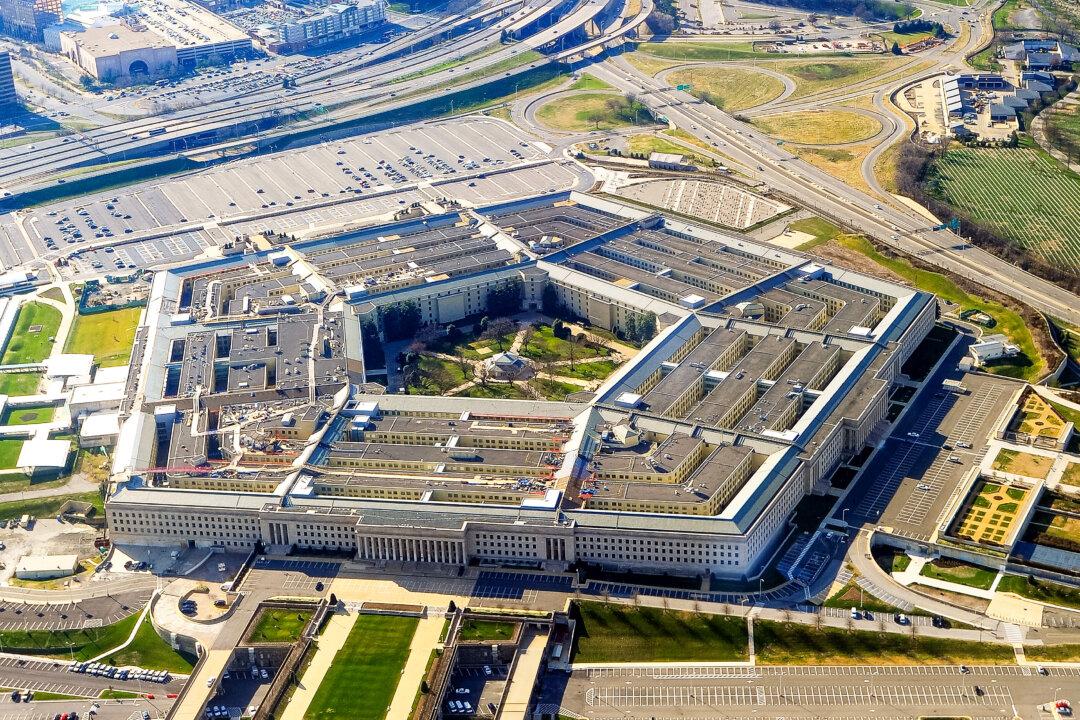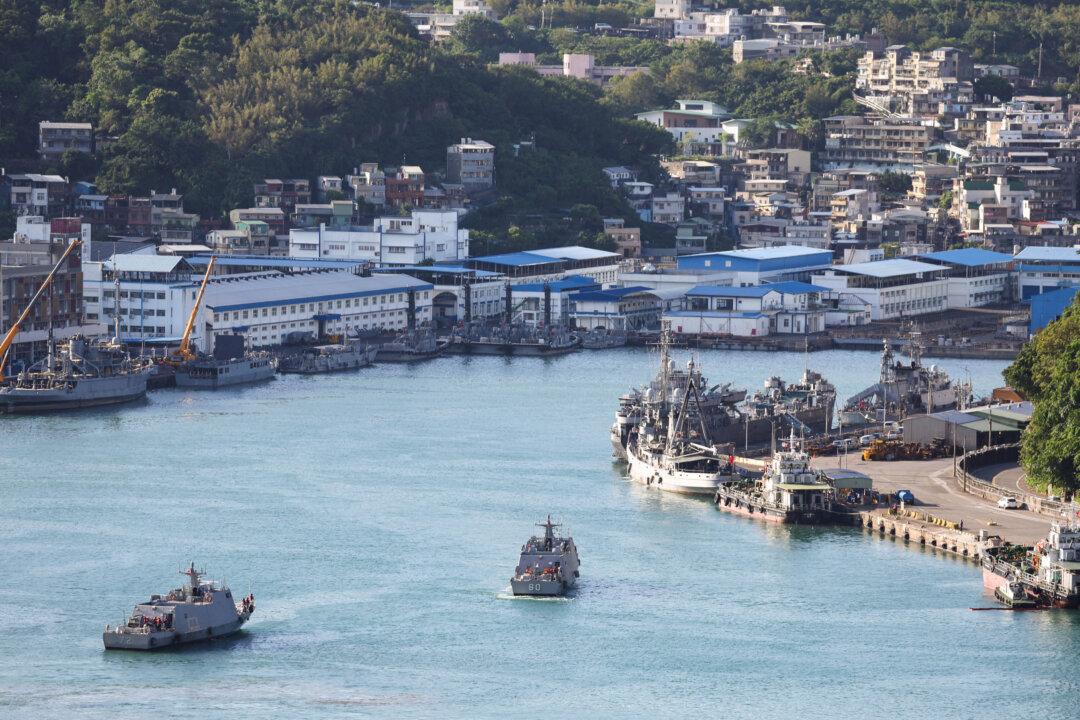Commentary
The situation is grim for the U.S. Defense Industrial Base (DIB) compared to the relentless military output of China. The reality is that despite voluminous policy statements from the Biden administration in meeting U.S. defense commitments to allies and partners in the Middle East, Europe, and Asia, the DIB is not substantially expanding its production throughput.
The performance by the U.S. military and partners was remarkable in
April and October of this year in defending Israel and surrounding partners when Iran fired 300 different types of missiles and then 180 ballistic missiles, respectively. However, the mathematical reality is that far more missiles are being fired by American forces than being produced.
One of the standouts of the epic April and October missile shoot-out was the SM-3 Missile produced by Raytheon. Firm numbers of SM-3s used in April and October are not publicly available. An informed estimate in the absence of official numbers from the Department of Defense (DOD) is that roughly between 100 and 400 SM-3 missiles were fired at the 480 Iranian missiles, cruise missiles, and drones launched at Israel in April and October.
The current annual production of SM-3 missiles is 12. That’s a shockingly low number, which means that, in two engagements, eight or more years of production throughput were used. Three mutually supporting strategies are beginning to emerge that can increase the output of the entire DIB: new government-owned, contractor-operated (GOCO) plants; co-production with trusted international partners; and multi-year contracts with protected funding.
Need for New GOCO Plants
The missile situation is not isolated but emblematic of a broader dearth of capacity in the DIB across many areas. The DOD has realized that the existing DIB is not capable of higher rates of production to support the building of deterrence or supporting broader conflict, and has addressed this by
releasing its first Industrial Strategy in December 2023. Part of the solution identified in this strategy to increase production is reinvigorating the World War II operating concept of GOCO. Combined with co-production and multi-year contracts, this substantially increases the throughput capacity of the Industrial Base.
Air Force Lt. Col. Eric Suits explained the rationale for returning to the GOCO model in an article published on the DOD’s Defense Acquisition University (DAU) website last month. “The conflicts in Ukraine and Israel have highlighted what defense industrial experts have feared for years—the U.S. Defense Industrial Base (DIB) has been unable to surge wartime materiel production to meet demand requirements,” he wrote.
“This primarily is due to [the] industry’s inability to make the capital investments necessary to create production capacity beyond the DoD’s contractual demand signal.”
Suits continued: “To quickly meet increased production quantities, firms require facilities, equipment, tooling, raw materials, and people on standby to make the transition. However, two powerful dilemmas within the DIB make that difficult, if not impossible. Large firms are penalized by their shareholders and Wall Street for investing in or holding onto capital that is not actively producing profit.”
He proposes five new GOCOs for military aircraft production as a starting point for an expansive new GOCO program across all domains.
Co-Production With Trusted Partner Nations
A parallel program with GOCOs is the intuitive step of seeking what’s called “co-production” agreements, in which trusted partner nations are permitted to produce the products they have been sold. This is a win-win for both sides. It increases the production capacity of common equipment—a key tenet for victory in World War II-style global conflict.At a gathering in June in Washington, according to the head of South Korea’s Defense Acquisition Program Administration (DAPA), Seok Jong-gun, and the U.S. Army acquisition head, Doug Bush, there is no reason why the two longtime allies cannot collaborate on various projects. There are accelerating discussions between HD Hyundai and the U.S. Navy about becoming repairers and builders of U.S. naval vessels.
Other opportunities exist with Japan, Australia, the United Kingdom, Taiwan, and Israel. Taiwan is a model of
co-production opportunities with a
$19 billion backlog of weapons deliveries. Japan has been approved to make U.S.
air-to-air defense missiles, and it may also
merge into the AUKUS (Australia, UK, United States) agreement. Israel has had
successful co-production arrangements with the United States for years. Co-production is the logical model to build capacity among like-minded nations and can include these trusted partners building components, systems, and weapons for export back into U.S. GOCOs.
Multi-Year Contracts With ‘Protected’ Funding
In a
keynote address at the 30th annual Pennsylvania Showcase on Commerce in September 2021, Deputy Secretary of Defense Kathleen Hicks said the data show that “if the DIB continues along the same trend, [DOD] could lose an additional 15,000 suppliers over the next 10 years.”
According to a
survey by George Mason University, businesses that leave the DIB indicate that they stopped participating in DOD contracts mainly because of the DOD bureaucracy, solicitation process, and financial matters—primarily erratic funding.
One of the banes of the defense industry is the wildly unpredictable annual funding saga—there is not a fiscal year in DOD; there’s a fiscal quarter, and if monies are not obligated by the mid-year mark, the government program managers are subject to review and loss of unobligated amounts in the feared “
mid-year sweep up,” which incentivizes spending money fast (and perhaps unwisely) instead of losing it. Multi-year contracts with protected funding ensure better pricing and efficiencies for GOCOs and co-production.
Multi-year contracts with protected funding for large acquisitions are intuitively obvious and help provide more stability for program management and predictability of funding.
The Navy has been granted some multi-year authority but seems to be intentionally underfunding the initiatives, leading to a disastrous Fiscal Year 2025 submission. The FY 2025 budget request proposes the retiring of 19 ships while only building six new ships—by any math, the Navy is going backward.
Passionate embrace of GOCOs, co-production, and multi-year funding can be the pathway for the success of the Arsenal of Democracy 2.0.
Views expressed in this article are opinions of the author and do not necessarily reflect the views of The Epoch Times.







